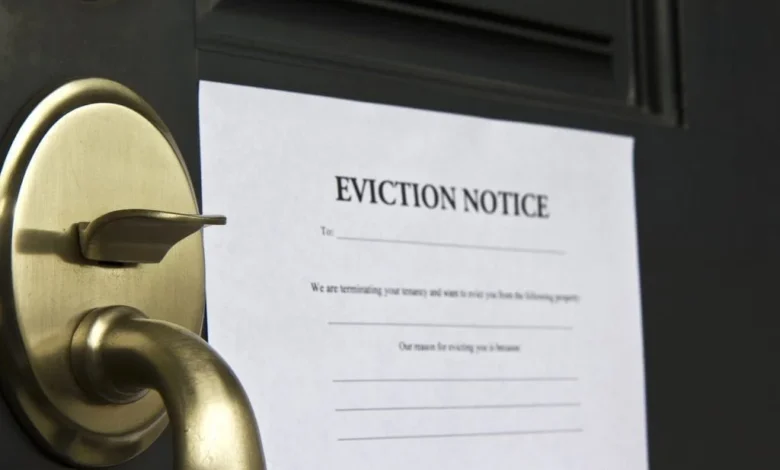Is It Illegal to Live in a House Without a Certificate of Occupancy? Legal Risks and How to Obtain One

If you’re planning to move into a newly constructed home or have made significant renovations to an existing property, one crucial document that should be on your radar is the certificate of occupancy. This legal document certifies that a building complies with local building codes and is safe for occupancy. But what happens if you decide to live in a home without this certificate? Is it illegal, and what are the risks? In this article, we’ll break down the legal implications, risks, and steps you can take to obtain a certificate of occupancy.
What Is a Certificate of Occupancy?
A certificate of occupancy (CO) is an official document issued by your local government or municipal authority that confirms a building’s compliance with applicable building codes and regulations. It certifies that the structure is safe and suitable for habitation.
The certificate is typically required when:
- A new building is constructed.
- Significant renovations or additions have been made.
- There’s a change in the use of a building (e.g., from commercial to residential).
Without a certificate of occupancy, the local government hasn’t officially cleared the home as safe for living, which can have legal and financial implications.
For more information on certificate of occupancy requirements, you can refer to HUD’s Housing Standards or your local government’s building code department for specific guidelines applicable to your area.
Legal Implications of Living Without a Certificate of Occupancy
So, is it illegal to live in a house without a certificate of occupancy? The answer depends on local laws, but in many cases, yes—it is illegal. While some areas may have more lenient regulations, most municipalities enforce strict rules regarding certificates of occupancy.
Here’s what you might face if you decide to live in a house without one:
- Fines and Penalties: Local authorities may impose fines or fees for violating building regulations. These penalties can accumulate over time.
- Eviction: In some cases, living in a home without a certificate of occupancy may result in forced eviction. Authorities may deem the property unsafe, forcing occupants to vacate until it meets code requirements.
- Denial of Utility Services: Many utility companies require a certificate of occupancy before providing services like water, electricity, and gas. Without these essentials, living in the home could be extremely difficult.
For specific legal implications in your region, you can consult your state’s real estate laws or legal guidelines for homeowners. It’s important to check with your local authorities about the specific laws in your area, as regulations can vary from one place to another.
Risks of Living in a House Without a Certificate of Occupancy
Aside from the legal ramifications, there are significant risks associated with living in a house that hasn’t been cleared by building inspectors. Here are some of the key risks:
- Safety Hazards: The absence of a certificate means that your home hasn’t been inspected for safety compliance. This could mean hidden dangers such as faulty wiring, structural weaknesses, or lack of fire safety measures.
- Financial Risks: If you decide to sell the house in the future, not having a certificate of occupancy could make it difficult to find buyers or lower the resale value. Additionally, it may be impossible to obtain a mortgage or homeowners insurance without one. You can read more about the financial risks of non-compliant properties.
- Legal Risks: If someone gets injured in your home due to non-compliance with building codes, you may be held liable. Furthermore, you could be sued for negligence if the home was sold or rented out without proper certification. Learn more about the legal consequences of non-compliance with building codes.
How to Obtain a Certificate of Occupancy
If you find yourself in a situation where you need a certificate of occupancy, here’s a general guide on how to obtain one:
- Schedule an Inspection: Contact your local building department and schedule an inspection. A certified inspector will assess the property to ensure it complies with local building codes and safety standards. Here’s a guide on what inspectors look for during an occupancy inspection.
- Complete Any Required Fixes: If the inspector finds issues, you’ll be required to fix them before the certificate can be issued. These can range from minor corrections like installing smoke detectors to major renovations.
- Submit Necessary Paperwork: After passing the inspection, you will need to submit paperwork to your local authority. This includes the application for the certificate of occupancy and any other necessary documentation such as proof of construction permits.
- Receive Your Certificate: Once all requirements are met, the local government will issue the certificate of occupancy, officially permitting you to reside in the home.
If you’re uncertain about the process or have encountered obstacles, it’s wise to consult your local building authority’s guidelines for more detailed information about the requirements in your jurisdiction.
Exceptions and Special Cases
There are instances where it may not be illegal to live in a house without a certificate of occupancy, though these cases are rare. Some municipalities may offer temporary certificates of occupancy if the property is mostly compliant but requires minor fixes. However, these are issued at the discretion of local authorities.
In certain rural or unincorporated areas, building codes may not be as strictly enforced, allowing for some leniency. You should still check with local authorities to ensure you’re not unknowingly breaking any laws.
Conclusion
Living in a house without a certificate of occupancy can expose you to significant legal and safety risks. If your home does not yet have this document, it’s essential to follow the necessary steps to obtain one as soon as possible. Not only does this safeguard your property and finances, but it also ensures the safety of you and your loved ones. For more information or to get started, contact your local government’s building code office.
FAQs:
Can I sell a property without a certificate of occupancy?
Selling a property without a certificate of occupancy is challenging and sometimes illegal, depending on local regulations. Many buyers' mortgage lenders require this document before approving a loan. Without it, the sale process may be delayed or canceled
Can I rent out a house without a certificate of occupancy?
Renting out a house without a certificate of occupancy is illegal in many places. If tenants are found living in a property without one, landlords may face fines, legal action, and the possibility of having to refund rent
How do I obtain a certificate of occupancy?
To obtain a certificate of occupancy, you'll need to apply through your local building department, schedule an inspection, and ensure your property meets all safety and building code standards. Once these steps are completed, you’ll be issued the certificate
Can I move furniture into a house without a certificate of occupancy?
While you technically may be able to move furniture in, doing so could create the appearance that you're living in the home, which can lead to complications with inspections. It’s best to wait until the certificate is obtained to avoid delays or fines
What inspections are required to get a certificate of occupancy?
Inspections typically include checks on electrical systems, plumbing, fire safety, and overall structural integrity. Each municipality may have different requirements, so it's essential to check with local authorities
Sources:
- Realty Times – Can You Move in Before a Certificate of Occupancy?
https://realtytimes.com/consumeradvice/sellersadvice/item/1043312-can-you-move-in-before-a-certificate-of-occupancy - Legal Beagle – Can My Landlord Be in Trouble if He Has No Certification of Occupancy for a Tenant?
https://legalbeagle.com/7846846-can-landlord-trouble-certification-occupancy.html - HomeLight – What is a Certificate of Occupancy and When Do You Need One?
https://www.homelight.com/blog/what-is-a-certificate-of-occupancy/ - PocketSense – Can I Sell My Property Without a Certificate of Occupancy?
https://pocketsense.com/can-sell-property-certificate-occupancy-12017102.html




